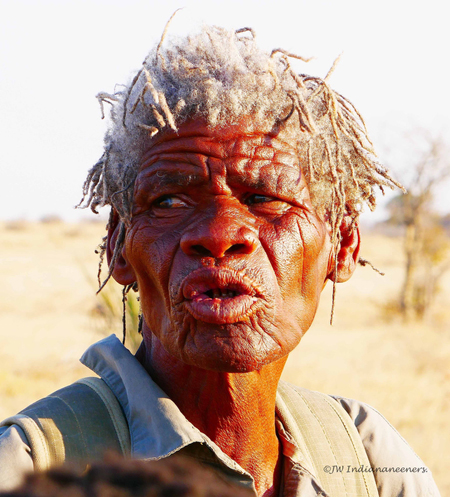An Epic Equestrian Safari through Botswana’s Makgadikgadi Salt Pans
Janine Whyte of Globetrotting Cowgirl discovers a hidden paradise in Botswana's best-kept secret, the Makgadikgadi Salt Pans.
The Okavango Delta has long been synonymous with Botswana. Its vast, pulsating wetland is home to an abundance of wildlife, making it a perfect haven for all safari aficionados. However, Botswana has many jewels hidden in her crown, visible to those who seek, explore, and have a thirst for adventure. A short distance from the water-drowned lands of the Okavango Delta lays the harsh, barren landscape of the Makgadikgadi, the largest network of salt pans in the world--the remaining relic of the immense Lake Makgadikgadi that existed thousands of years ago.
For most of the year, this desolate area remains waterless and extremely arid--the flat, featureless terrain stretching for eternity, merging with a milky blue horizon. The extraordinary ecosystem of this unique land is the main attraction--during times of good rain, the Pans magically transform to a powder blue lake, with waters that gently lap the shorelines, lulling one gently back to the by-gone days of Lake Makgadikgadi.
Ditaka enjoying running free on the Pans. Photo by David Foot.
I once again boarded a small charter flight after a restful night in Maun. Being the only passenger, I felt it my duty to keep the pilot company in the cockpit. The temptation to press buttons and fiddle with gauges was hard to resist, but soon I was hypnotized by a vision of beauty unfolding as we climbed higher into the atmosphere. I left behind the vivid indigos and velvety emeralds of the Okavango Delta and entered a world of burnished oranges, shimmering whites, and the golden grasslands of the Kalahari Desert. Despite the arid vengefulness of the landscape, it was mesmerizing in both its scope and its beauty.
Welcome to Camp Kalahari.
The first thing I noticed upon landing was the intense heat of the Kalahari. It was still early and the sun had not yet reached its peak but was already glaring relentlessly upon us. The desert breeze offered respite and a cooling caress, a much different sensation to the building humidity of the Delta from where I came. I slinked purposefully to the nurturing shade of the waiting four-wheel drive, much like a lioness prowling to the shadow of a tree, and within fifteen minutes, I had arrived at my new home on the edge of the ancient super lake.
Nestled amongst the acacias and mokolwane palms of Hyena Island lay Camp Kalahari, where I was greeted by the bright, warm smile of Jomo, armed with a cool drink to soothe my parched throat. Historic maps of Africa charting explorations and discoveries adorn the walls of the central thatched library. Original African furniture married with colonial antiques decorate the living and dining area, giving a sense of comfort and adventure. It was a very apt setting to start my own exploration of the area.
The Meru tents are just as impressive. Peeling back the canvas flaps, I was immersed in a different era: four-poster beds covered in crisp, white cotton sheets sit atop a scattering of colorful rugs. Polished wood furniture added a vibrant richness and warm texture. Colonial antiques whispered stories of pioneering and expeditions, as I made my way through to the en-suite bathroom encased by deep, gleaming mahogany colored panels. I do have to stifle a laugh at times that these accommodations are referred to as tents--they’re akin in size to a studio apartment in Dublin city center!
Camp Sunrise. Photo courtesy Janine Whyte.
I was the first of the group to arrive for the Botswana horse safari. Three more riders would land later in the day. After a quick refresh, it was time to meet my guide for lunch. David Foot is recognized as one of Africa’s most experienced horseback safari guides and after a few moments in his company, it’s easy to understand why. He’s incredibly knowledgeable about all aspects of the African bush, and his passion and enthusiasm are infectious. Word of warning: if you’re not a keen birder, smile, nod, and pretend you love everything avian. It’s a lot easier than the alternative! Although I have to admit, the quick-witted banter, comedic rebukes, and my almost allergic response to all things twitcher did make for some very entertaining, endearing, and laughable moments.
Being the only person in camp, I decided to take advantage of the solitude and relax by the plunge pool. Within minutes, I was in a deep sleep--the result of a refreshing glass of white wine at lunch. It was the type of sleep where you have extremely vivid dreams, but at the same time are aware that you are asleep. No surprise then that when I awoke to find three elephants directly in front of me drinking from the pool, I imagined I was still sleeping! Despite the boundary fence placed around the camp, elephants still enter. They have discovered a readily available source of water in this dry, harsh environment, so on occasion, as I discovered, you may find them at the Camp Kalahari plunge pool.
I’ve had the privilege of being in the presence of these amazing giants before, but in my previous experiences, I’ve either been on a horse, safari truck, boat or in a tent. To be in such close quarters without any barriers is a very humbling experience, I could truly appreciate the sheer size and power of these animals. I could hear the soft, rhythmic slurping of them drinking the water and the sound of their ears whooshing as they fanned themselves. I could count the deep lines and crevices in their leathery skin, and I could see their wise, old eyes blinking against the sun. As quickly as they appeared, the three bull elephants lumbered away into the bush and I finally exhaled. The first day of camp and already my expectations were exceeded--and I hadn’t even been riding yet!
Cooling off at the watering hole. Photo courtesy Janine Whyte.
After meeting the rest of the team, including a lovely English couple who exuded laughter, joy, and fun--and a German lady, who for the first time in my ten years of travelling made me regret not opting for the single supplement, it was time to meet the horses for a short introductory ride around the surrounding area. I was on Ruby, a stunning black mare who was not too fond of standing quietly. She was always on the move and marched as if on a mission--I could completely relate. You would be forgiven for thinking that the Pans are devoid of wildlife, particularly during the harsh dry season (for they are a salty desert), but you would be mistaken.
The Makgadikgadi Pans hold Botswana’s best-kept secret, at the beginning of each year, the second largest migration of zebra and wildebeest occurs from parts of the Okavango Delta, all the way to this arid and untouched place of absolute beauty, and then back again. Although it was now September, there was still an abundance of game frolicking--perhaps some decided to stay and adapted to the harsh conditions? The beauty of nature is that it always keeps us guessing!
Bruce and I. Photo courtesy Janine Whyte.
As the sun hastened towards the horizon, we enjoyed sundowners overlooking the Pans while the wonderful team of grooms took our horses home to bed. Nature had more surprises in store for us. Two stealthy figures meandered across the Pan, a pair of lionesses hungry after their day of slumber, preparing for a hunt. A brave little jackal goading them into a mock chase. As darkness fell, we scrambled into the car and tracked the huntresses to the waterhole, the night air still and silent, and the gentle lapping of tongues on water the only sound as their moonlit reflections gleamed back at them.
Riding in the Kalahari.
Our days on these Botswana riding holidays followed a structured routine with many extraordinary encounters. At 5.30 am, the delicious aroma of coffee that was delivered to the tent heralded the dawn of a new day and new adventures. Breakfast commenced at 6:00 am and it never ceased to amaze me how the wonderful cooks managed to provide freshly baked, gluten-free bread and treats for my coeliac inflicted tummy. It was more delicious than any I had sampled before. We were in the saddle by 6.30 am to avoid the punishing midday heat with lunch and a welcome siesta until 4:00 pm. The Kalahari sun just seemed to sap all life from within. Evenings were devoted to game drives in search of nocturnal predator activity before returning to camp for more delectable food to tantalize our taste-buds.
Some more of the Kalahari's residents. Photo courtesy Janine Whyte.
Our second day of riding took us to explore the ‘Land of a Thousand Islands,' a chain of palm-covered sand dunes on the ancient lake bed. With a new day came a new horse for me to try before making the final decision on which of our four-legged companions would be accompanying us to fly camp the next day. Bruce had started his safari career in the Limpopo Valley, the place where I, ironically, first experienced a “horse-riding” holiday. He was the perfect companion to observe the herds of wildebeest as they circled around us, swirls of dust dancing from their stampeding feet--with cavorting steenbok and pronking springbok joining in the fray. Later that evening, as we drove to a hyena den 90 minutes from camp, I truly began to appreciate the sheer vastness and unique ecology of the Pans. The land and sky appeared to shimmer and merge into one.
The elusive brown hyena was nowhere to be seen, and as the great red globe of the African sun began to melt into the horizon, we admitted defeat and turned towards home. A brief stop to stretch our legs and witness the sun’s final goodnight was cut short by David ordering us back into the truck immediately. There on the horizon, snaking along the Pan, was a solitary brown hyena--head low and intent on scavenging food. We tracked him until the inky black night enveloped us and he was able to evade us as silently and surreptitiously as he had found us, one of the rarest carnivores in Africa.
The Real Adventure Begins.
For me, the real adventure began on Day Three as we rode eastwards, following the sun towards Xau Xai Fly Camp. To be stationary in one place for longer than a night is a new experience for me on these trips, I generally prefer to ride progressively, making new camp every night. While I enjoyed the comfort of not having to pack up and move every day, I was also beginning to feel the need to fly. I opted to partner with Bruce for the trip--it made more sense to travel with a group of geldings rather than add Ruby as a lone mare into the melee--which would surely tempt trouble, and perhaps some sleepless nights for the grooms! We left the open plains behind and entered a world dense with mopane and acacia woodland, the perfect camouflage for elephants (as we discovered on a nice, brisk canter cut abruptly short when we almost collided)! Despite their colossal size, these wise giants are experts at hiding.
Glistening in the distance, another miraculous discovery greeted us. Deep amongst the dusty, parched land, an icy blue lake created by the surplus rains remained. Flamingos waded delicately, creating ripples that danced across our oasis. Only the slightest tinge of pink tinted their feathers, a vivid dash of color swirling against the expansive horizon--one would be forgiven for thinking we had just witnessed a mirage. Although a truly incredible and captivating sight, we had to peel ourselves away, for we had many kilometers to cover and many more treasures to unearth.
Sunset on the Makgadikgadi Pans. Photo by David Foot.
We had not ridden far when we were stopped by a safari vehicle warning us of lions in the area--three young males had stopped for a drink at a watering hole directly on our route. When riding in big game areas, you always respect the predators and give them a wide berth. In fact, you preferably don’t want to come across a lion whilst sitting on a horse. Horses by nature are prey animals. They will spook and bolt if they sense a predator--it’s their instinct and their survival mechanism. We crept along quietly, picking our way carefully through the scrub and trying to make as little noise as possible. The horses, calm and contented, showed no signs of worry or stress.
All of a sudden we saw them, lazing by the watering hole and taking an occasional sip of water until something very unexpected happened--they bolted from us! We later learned that they ran for about seven kilometers after their encounter with the horses! The temperature was slowly creeping higher and the fierceness of the sun growing stronger as we picked up the pace and pushed on towards the “clump of nine palm trees,” which signaled lunch. Our lunch break consisted of cool, crisp wine and a siesta at the now bone dry Gusta Pan, and a well-deserved break for the horses beneath the sprawling branches of Greens Baobab.
The three amigos...not as close as my first encounter with them! Photo courtesy Janine Whyte.
Rising from the arid, table flat surroundings of the Ntwetwe Pan, the majestic Greens Baobab is proudly positioned alongside the infamous Missionary Road, along which David Livingstone famously traveled. Its monumental trunk is a testament to history, etched with the initials and inscriptions of early 19th century hunters, traders, and explorers. One can only imagine the sights and visions this tree has witnessed. If only it could talk, I thought to myself, as I traced the gnarled engravings with my fingers and sheltered beneath the intricate pattern of its impressive branches before mounting once again for the final, dusky ride towards Xau Xai.
For this evenings ride, I was given the esteemed honor of riding David’s pride and joy, Ditaka, a striking looking appaloosa with extremely comfortable paces. As we cantered swiftly along, trying to beat the oncoming darkness, the chiming of copper bells heralded our arrival into more pastoral lands, where herds of cattle and local horses roam freely. Just as the sun melted into the horizon, we reached fly camp, where we were greeted by a host of bright, warm smiles. Once the horses were settled for the night, we enjoyed a well-deserved drink by the roaring campfire. A brief, tantalizing glimpse of the expansive pans and the next day's adventure flickered between the amber glow of flames as the night sky, full of sparkling stars, winked upon us.
Meerkat Manor!
The Makgadikgadi Pans is a unique ecosystem--throughout all my travels and horse riding around the world, I had never experienced such an environment. It was the rarity of this adventure that compelled me to visit. What compounded that interest was the opportunity to meet the Kalahari’s most famous residents, the meerkats! Due to an ongoing habitation program, run by Uncharted Africa Safari Company, you can observe these captivating creatures from extremely close quarters. They are not tame but are accustomed to the presence of non-threatening humans. Lucky for us, the meerkats were sighted by Blade, our “meerkat man,” literally a five-minute walk from camp, so after breakfast, we went to experience the Kalahari through the eyes of a meerkat.
Still and motionless you may just find yourself crawling with Meerkats! Photo courtesy Janine Whyte.
The sun was rising and just beginning to send its fingers of warmth to the ground below, when up popped a sentry from the network of burrows beneath the ground, checking for predators and signaling that it was safe for the foraging to begin! For the next three hours, we observed these enchanting little animals as they interacted with each other, foraged for food, and looked after the young. It truly was one of the most memorable experiences of my time in Botswana, laying in the dirt and dust of the Kalahari-crawling as if I, too, was a meerkat, the soft pad of paws on my legs and head as they climbed on top of me and used me as a sentry post, babies nibbling at my fingers and curling into my body for warmth.
One cheeky little chappy even climbed his way to eye level and gave me a little nose kiss--truly an incredible and special experience! What I enjoyed most about this interaction program was that the meerkats decide if they want to interact. You are just present and they initiate all contact. It was incredibly hard to pull myself away. The meerkats had me firmly captivated, but they had awarded me a fantastic experience and one must respect that it was time to thank them and leave them to forage and scuttle to their own devices!
A Surprise on the Pans.
Although only 10:00 am, the day was already beginning to heat up, David decided to entice our mounting curiosity with a short ride to the edge of the Pan. It was as if time had stood still--there was no sound, only the crunching of the horses' hooves; no wind stirring the air, just a vast expanse of emptiness, of nothingness. The sky seemed to melt into the Pans on the horizon...and then we let the horses go. The ground was perfect to just let them fly--there is no greater sense of freedom and living than galloping without boundaries, sheer abandonment.
As a rider, there is no greater happiness than the knowledge that the horse beneath you is bathed in joy, prancing with purpose, and snorting with pleasure, Bruce was a king among horses that morning, although defeated by Ditaka and Velocity, he felt as if he’d won the Kentucky Derby! Later that evening, the strut still remained in his step as we entered the Pans once again. Into the great white abyss, we rode, as the sun set to a magnificent kaleidoscope of glowing oranges and roaring reds. A solitary paraffin lamp on the horizon called us home, the Southern Cross rising in the night sky pointed us towards our bedrolls--our million star hotel awaited.
Aerial view of the Makgadikgadi Salt Pans in Botswana. Photo courtesy Janine Whyte.
There is nothing quite like sleeping under the stars, gazing upon the crystal encrusted velvety carpet of night, tiny droplets of sparkle that shimmer and gleam until the first fingers of daylight stretch forth from their slumber. There is something magical about experiencing these wonders of nature, bearing witness to the beauty of our world in its quietest moments. Watching the sky erupt into a rainbow of color as the sun illuminated the Pans below, I prepared to leave my slice of paradise.
Today we would ride as endurance riders, fast and furiously back to Camp Kalahari in time for lunch. Bruce was to enjoy a day off after all his hard work. Griffin, my new partner (an extremely handsome Shire cross), carried me valiantly across the Pans, his hooves skimming eagerly over the ground and covering the kilometers with ease. Soon the mokolwane palms were upon us, dotting the horizon and pulling the horses ever closer to home. The great bulk of five bull elephants surrounded the remaining trickle of the watering hole, heralding our arrival, and with one monumental push the horses entered the stables--tremendous effort!
Meeting the San Bushmen.
Triumphantly, we returned to Camp Kalahari after our explorations of the Makgadikgadi and the revelations of its secrets, but the Kalahari still held some mysteries to uncover. Uncharted Africa passionately supports cultural tourism in Botswana and has been working closely with the Zu/’hoasi tribe of the Western Kalahari to try to preserve their unique, but vanishing culture. Guests are offered the opportunity to spend time with the Bushmen, to learn from them, to have a glimpse into the past, and to learn about a culture that is deeply entwined with the land and the environment. I, for one, was very excited to partake in such a unique experience. I’ve always held a deep interest in learning about indigenous cultures, particularly since my time spent working with indigenous communities in north west Australia, and I was intrigued by the San Bushmen.
The San Bushmen. Photo courtesy Janine Whyte.
We drove the short thirty-minute journey to the traditionally built village to meet the tribe. Adorned in their ancestral clothing of animal skin decorated with brightly colored beadwork, they greeted us in their traditional manner, and had a little laugh and joke with us as we tried to pronounce their names (in their native clicking language)! Amongst the elders, Mr. Cobra, one of the last surviving, truly nomadic Bushmen, his face etched with stories and legends, a cheeky gleam in his wise old eyes. From the village, we walked out into the bush and spent the next hour or so learning how they survived in the harshest of environments, using their incredible knowledge of plants, animals and survival skills.
What looked to me like just another stalk protruding from the ground proved to, in fact, be a wild carrot or an onion-like plant used as medicine for stomach sickness. Mr. Cobra entertained us with his “scorpion whisperer” act, and we learned how to start a fire without the convenience of “white man’s magic," and how to set a trap to catch small game. We even got an insight into some of the traditional games they play. It’s true that language only accounts for less than 10 percent of communication. The warmth and joy of their facial expressions and their smiles and laughs spoke volumes.
Mr. Cobra is one of the last surviving truly nomadic Bushmen. Photo courtesy Janine Whyte.
I once again was reunited with Bruce for a final ride out into the Pans the following morning. One final glimpse of the zebra and wildebeest congregated at the watering hole, standing proudly against the clear azure sky. One final canter, the sound of the Pans crunching underfoot. One final mesmerizing look at the enchantment of the Kalahari...the perfect end to the perfect adventure in Botswana’s best-kept secret.
Learn more about the Botswana Makgadikgadi Pans Safari and other Africa riding vacations.
Kalahari Dry Season Ride September 2017.
About the Author: Janine Whyte (Globetrotting Cowgirl), first got bitten by the travel bug in 2007 while backpacking around the world on a sabbatical year from work. In 2009, she stumbled across the world of equi-tourism and discovered that she could combine her two greatest passions in life--horses and travel. Since her first horseback safari in Botswana in May 2009, Janine has traveled off the beaten track and on four hooves in over 20 countries--enjoying many adventures such as traversing the mighty Andes mountain range and crossing the oldest desert in the world. You can read more about her travels and follow her adventures on her blog: www.indiananeenersglobetrottingcowgirl.com. Follow her on social media: Facebook and Instagram.
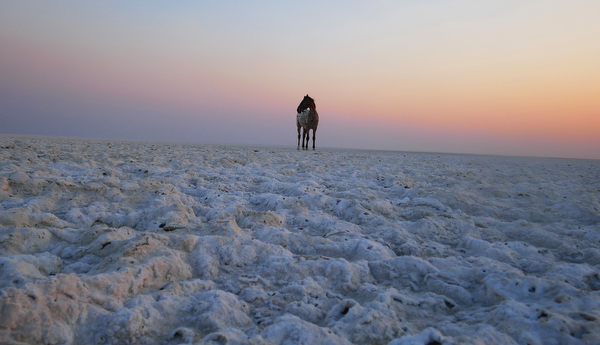

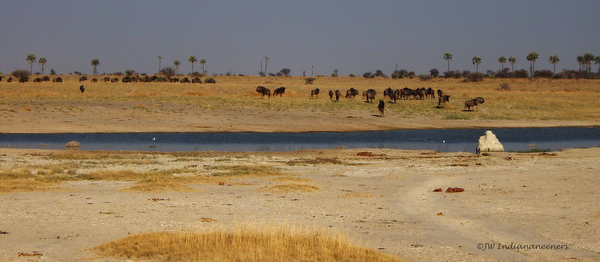
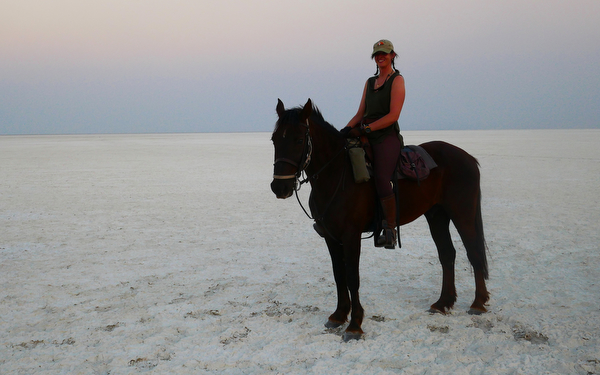
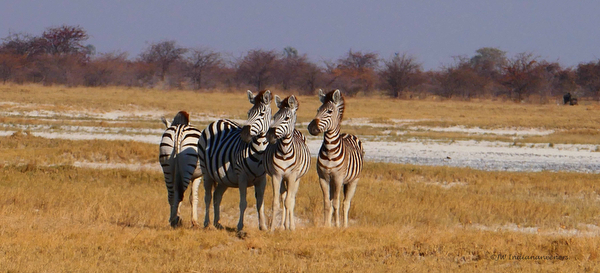
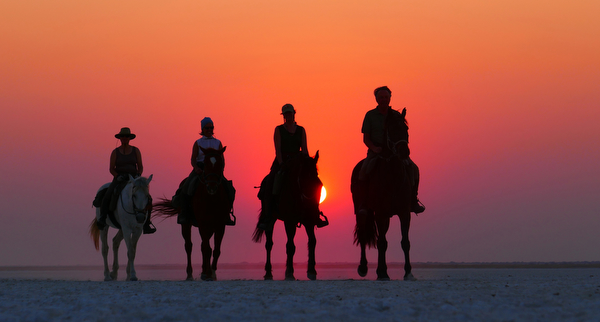
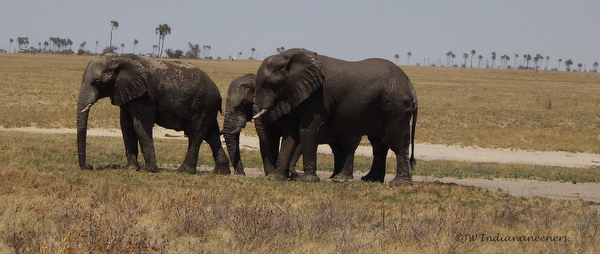
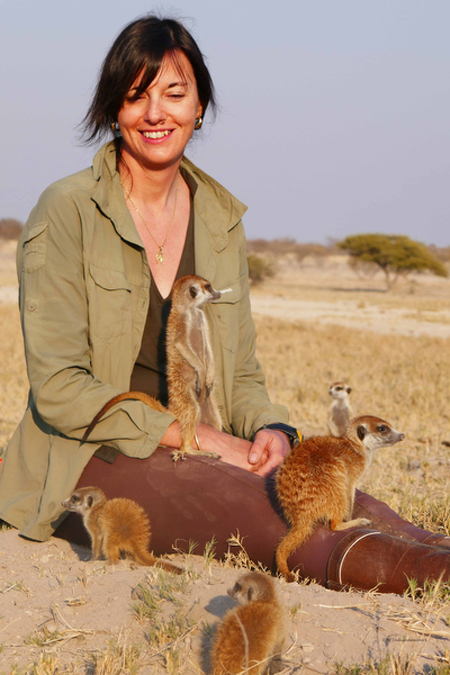
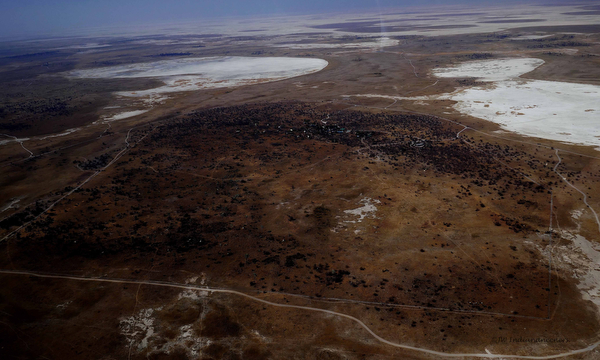
.JPG)
